Recognizing Landscapes for the Purpose of Sustainable Development—Experiences from Poland
Abstract
1. Introduction
1.1. Historical Context of Polish Landscape Character
1.2. Research Context and Aim of the Study
2. Materials and Methods
2.1. Data
2.2. Methods
- Collection of data sources and maps (see Table 2)
- Identification of landscape types
- Drawing landscape units
2.2.1. Aggregation of Data for the Use of Identification of Landscape Types: Marshy-Meadow-Mostly Treeless, Forest, and Agricultural
- dominating surface coverage;
- appearing within the whole landscape unit (touching or creating the borders of the landscape unit).
Marshy-Meadow-Mostly Treeless
Forest
Agricultural
2.2.2. Identification with the Use of Multivariable Analysis of Suburban and Residential Landscape
3. Results
Data Verification
4. Discussion
5. Conclusions
Author Contributions
Funding
Acknowledgments
Conflicts of Interest
References
- Zonneveld, I.S. Land Ecology: An Introduction to Landscape Ecology as a Base for Land Evaluation, Land Management and Conservation; SPB Academic Publishing: Amsterdam, The Netherlands, 1995. [Google Scholar]
- Matías, L.; Mendoza, I.; Zamora, R. Consistent pattern of habitat and species selection by post-dispersal seed predators in a Mediterranean mosaic landscape. Plant Ecol. 2009, 203, 137–147. [Google Scholar] [CrossRef]
- Verhoeven, J.T.; Soons, M.B.; Janssen, R.; Omtzigt, N. An Operational Landscape Unit approach for identifying key landscape connections in wetland restoration. J. Appl. Ecol. 2008, 45, 1496–1503. [Google Scholar] [CrossRef]
- Bastian, O. Landscape classification in Saxony (Germany)—A tool for holistic regional planning. Landsc. Urban Plan. 2000, 50, 145–155. [Google Scholar] [CrossRef]
- Mücher, C.A.; Klijn, J.A.; Wascher, D.M.; Schaminée, J.H. A new European Landscape Classification (LANMAP): A transparent, flexible and user-oriented methodology to distinguish landscapes. Ecol. Indic. 2010, 10, 87–103. [Google Scholar] [CrossRef]
- Wascher, D.M. European Landscape Character Areas: Typologies, Cartography and Indicators for the Assessment of Sustainable Landscapes; Technical Report; Landscape Europe: Wageningen, The Netherlands, 2005. [Google Scholar]
- Granö, J.G. Eesti Maastikulised Üksused; Mattiesen: Tartu, Estonia, 1922. [Google Scholar]
- Europe, C.O. European Landscape Convention; Report and Convention; Council of Europe: Strasbourg, France, 2000. [Google Scholar]
- Kolejka, J.; Lipský, Z. Landscapemapping and Typology in the Czech Republic; Problemy Ekologii Krajobrazu, 2014; Volume 20. [Google Scholar]
- Miklós, L. Landscape Atlas of the Slovak Republic. In Slovakia: Ministry of Environment of the Slovak Republic; Slovak Environmental Agency Banska Bystrica: Banská Bystrica, Slovak Republic, 2002. [Google Scholar]
- Swanwick, C. Landscape character assessment: Guidance for England and Scotland; Making Sense of Place...; Countryside Agency Publications: Cheltenham, UK, 2002. [Google Scholar]
- Kondracki, J. Regiony Fizycznogeograficzne Polski; Wydawnictwa Uniwersytetu Warszawskiego: Warszawa, Poland, 1977. [Google Scholar]
- Bogdanowski, J.; Łuczyńska-Bruzda, M.; Novák, Z.; Bańska, M. Architektura krajobrazu; Państwowe Wydawnictwo Naukowe: Warsaw, Poland, 1973. [Google Scholar]
- Palang, H.; Printsmann, A.; Gyuró, É.K.; Urbanc, M.; Skowronek, E.; Woloszyn, W. The forgotten rural landscapes of Central and Eastern Europe. Landsc. Ecol. 2006, 21, 347–357. [Google Scholar] [CrossRef]
- Krystian, H. Spatial changes in rural areas in Poland during the transition and after accession to the European Union. Rural Areas Rural Space Popul. Soc. Act. Entrep. 2016, 167, 12–27. (In Polish) [Google Scholar]
- Krajewski, P.; Solecka, I.; Barbara-Mastalska-Cetera. Landscape change index as a tool for spatial analysis. In IOP Conference Series: Materials Science and Engineering; IOP Publishing: Bristol, UK, 2017; Volume 245. [Google Scholar]
- Solecka, I.; Sylla, M.; Świąder, M. Urban Sprawl impact on farmland conversion in suburban area of Wroclaw, Poland. In IOP Conference Series: Materials Science and Engineering; IOP Publishing: Bristol, UK, 2017; Volume 245. [Google Scholar]
- Antrop, M. Landscape change and the urbanization process in Europe. Landsc. Urban Plan. 2004, 67, 9–26. [Google Scholar] [CrossRef]
- Karpus, K. Legal protection of landscape in Poland in the light of the Act of 24 April 2015 amending certain acts in relation to strengthening landscape protection instruments. J. Lawsitem 2015, 774. [Google Scholar] [CrossRef][Green Version]
- Solon, J.; Chmielewski, T.J.; Myga-Piątek, U.; Kistowski, M. Identyfikacja i ocena krajobrazów Polski–etapy i metody postępowania w toku audytu krajobrazowego w województwach. Probl. Ekol. Kraj. 2015, 40, 55–76. [Google Scholar]
- Krajewski, P. Możliwości zastosowania oceny pojemności krajobrazu w planowaniu przestrzennym na obszarach podmiejskich. Archit. Kraj. 2012, 3, 22–29. [Google Scholar]
- Krajewski, P. Problemy planistyczne na terenach parków krajobrazowych w sąsiedztwie Wrocławia na przykładzie Ślężańskiego Parku Krajobrazowego. Pr. Nauk. Uniw. Ekon. We Wrocławiu 2014, 367, 147–154. [Google Scholar] [CrossRef]
- Pinto-Correia, T.; Gustavsson, R.; Pirnat, J. Bridging the gap between centrally defined policies and local decisions–Towards more sensitive and creative rural landscape management. Landsc. Ecol. 2006, 21, 333–346. [Google Scholar] [CrossRef]
- Zasada, I. Multifunctional peri-urban agriculture—A review of societal demands and the provision of goods and services by farming. Land Use Policy 2011, 28, 639–648. [Google Scholar] [CrossRef]
- Van Eetvelde, V.; Antrop, M. Indicators for assessing changing landscape character of cultural landscapes in Flanders (Belgium). Land Use Policy 2009, 26, 901–910. [Google Scholar] [CrossRef]
- Heldak, M.; Raszka, B. Prognosis of the Natural Environment Transformations Resulting from Spatial Planning Solutions. Pol. J. Environ. Stud. 2011, 20, 1513–1518. [Google Scholar]
- Hełdak, M.; Raszka, B. Evaluation of the Local Spatial Policy in Poland with Regard to Sustainable Development. Pol. J. Environ. Stud. 2013, 22, 395–402. [Google Scholar]
- Hełdak, M.; Raszka, B. Evaluation of the Spatial Policy of a Commune with Regard to Planned Land Use. Pol. J. Environ. Stud. 2013, 22, 125–130. [Google Scholar]
- Directive 2000/60/EC of the European Parliament and of the Council Establishing a Framework for the Community Action in the Field of Water Policy. 2000. Available online: http://eur-lex.europa.eu/LexUriServ/LexUriServ.do?uri=CELEX:32000L0060:en:NOT (accessed on 15 November 2017).
- Tong, S.T.; Chen, W. Modeling the relationship between land use and surface water quality. J. Environ. Manag. 2002, 66, 377–393. [Google Scholar] [CrossRef]
- Hundecha, Y.; Bárdossy, A. Modeling of the effect of land use changes on the runoff generation of a river basin through parameter regionalization of a watershed model. J. Hydrol. 2004, 292, 281–295. [Google Scholar] [CrossRef]
- Moss, T. The governance of land use in river basins: Prospects for overcoming problems of institutional interplay with the EU Water Framework Directive. Land Use Policy 2004, 21, 85–94. [Google Scholar] [CrossRef]
- Chmielewski, T.J.; Myga-Piątek, U.; Solon, J. Typologia aktualnych krajobrazów Polski, Typology of Poland’s current landscapes. Przegląd Geogr. 2015, 87, 377–408. [Google Scholar] [CrossRef]
- Pukowiec-Kurda, K.; Myga-Piątek, U. Application of New Methods of Environment Analysis and Assessment in Landscape Audits–Case Studies of Urban Areas Like Częstochowa, Poland. Environ. Eng. 2017, 1–8. [Google Scholar] [CrossRef]
- Pukowiec-Kurda, K.; Myga-Piątek, U.; Rahmonov, O. The landscape profile method as a new tool for sustainable urban planning. J. Environ. Plan. Manag. 2019, 1–19. [Google Scholar] [CrossRef]
- Plit, J. Przestrzenne zróżnicowanie i cechy charakterystyczne krajobrazów Polski w ujęciu historyczno-kulturowym. Probl. Ekol. Kraj. 2015, 40, 113–134. [Google Scholar]
- Kondracki, J. Geografia Regionalna Polski; Wydawn. Naukowe PWN: Warszawa, Poland, 2000. [Google Scholar]
- Antrop, M. Background concepts for integrated landscape analysis. Agric. Ecosyst. Environ. 2000, 77, 17–28. [Google Scholar] [CrossRef]
- Weng, Y.C. Spatiotemporal changes of landscape pattern in response to urbanization. Landsc. Urban Plan. 2007, 81, 341–353. [Google Scholar] [CrossRef]
- Hsieh, T.; Ma, K.; Chao, A. iNEXT: An R package for rarefaction and extrapolation of species diversity (Hill numbers). Methods Ecol. Evol. 2016, 7, 1451–1456. [Google Scholar] [CrossRef]
- Pechanec, V.; Janíková, V.; Brus, J.; Kilianová, H. Typological data in the process of landscape potential identification with using GIS. Morav. Geogr. Rep. 2009, 17, 12–24. [Google Scholar]
- Špulerová, J.; Dobrovodská, M.; Lieskovsky, J.; Baca, A.; Halabuk, A.; Kohút, F.; Mojses, M.; Kenderessy, P.; Piscová, V.; Barancok, P.; et al. Inventory and classification of historical structures of the agricultural landscape in Slovakia. Ekológia (Bratislava) 2011, 30, 157–170. [Google Scholar]
- Van Eetvelde, V.; Antrop, M. Analyzing structural and functional changes of traditional landscapes two examples from Southern France. Landsc. Urban Plan. 2004, 67, 79–95. [Google Scholar] [CrossRef]
- Bender, O.; Boehmer, H.J.; Jens, D.; Schumacher, K.P. Using GIS to analyse long-term cultural landscape change in Southern Germany. Landsc. Urban Plan. 2005, 70, 111–125. [Google Scholar] [CrossRef]
- Feranec, J.; Jaffrain, G.; Soukup, T.; Hazeu, G. Determining changes and flows in European landscapes 1990–2000 using CORINE land cover data. Appl. Geogr. 2010, 30, 19–35. [Google Scholar] [CrossRef]
- Ihse, M. Swedish agricultural landscapes—Patterns and changes during the last 50 years, studied by aerial photos. Landsc. Urban Plan. 1995, 31, 21–37. [Google Scholar] [CrossRef]
- Rawat, J.; Kumar, M. Monitoring land use/cover change using remote sensing and GIS techniques: A case study of Hawalbagh block, district Almora, Uttarakhand, India. Egypt. J. Remote Sens. Space Sci. 2015, 18, 77–84. [Google Scholar] [CrossRef]
- Niang, A.; Ozer, A.; Ozer, P. Fifty years of landscape evolution in Southwestern Mauritania by means of aerial photos. J. Arid Environ. 2008, 72, 97–107. [Google Scholar] [CrossRef]
- Chu, H.J.; Wang, C.K.; Huang, M.L.; Lee, C.C.; Liu, C.Y.; Lin, C.C. Effect of point density and interpolation of LiDAR-derived high-resolution DEMs on landscape scarp identification. Gisci. Remote Sens. 2014, 51, 731–747. [Google Scholar] [CrossRef]
- Friedman, J.; Hastie, T.; Tibshirani, R. Regularization paths for generalized linear models via coordinate descent. J. Stat. Softw. 2010, 33, 1–22. [Google Scholar] [CrossRef]
- Hubert-Moy, L.; Cotonnec, A.; Le Du, L.; Chardin, A.; Pérez, P. A comparison of parametric classification procedures of remotely sensed data applied on different landscape units. Remote Sens. Environ. 2001, 75, 174–187. [Google Scholar] [CrossRef]
- Herold, M.; Scepan, J.; Clarke, K.C. The use of remote sensing and landscape metrics to describe structures and changes in urban land uses. Environ. Plan. A 2002, 34, 1443–1458. [Google Scholar] [CrossRef]
- Hird, J.N.; Castilla, G.; McDermid, G.J.; Bueno, I.T. A simple transformation for visualizing non-seasonal Landscape change from dense time series of satellite data. IEEE J. Sel. Top. Appl. Earth Obs. Remote Sens. 2015, 9, 3372–3383. [Google Scholar] [CrossRef]
- Ju, J.; Masek, J.G. The vegetation greenness trend in Canada and US Alaska from 1984–2012 Landsat data. Remote Sens. Environ. 2016, 176, 1–16. [Google Scholar] [CrossRef]
- Singh, S.K.; Srivastava, P.K.; Szabó, S.; Petropoulos, G.P.; Gupta, M.; Islam, T. Landscape transform and spatial metrics for mapping spatiotemporal land cover dynamics using Earth Observation data-sets. Geocarto Int. 2017, 32, 113–127. [Google Scholar] [CrossRef]
- Parent, J.R.; Volin, J.C. Validating landsat-based landscape metrics with fine-grained land cover data. Ecol. Indic. 2016, 60, 668–677. [Google Scholar] [CrossRef]
- Deng, J.S.; Wang, K.; Hong, Y.; Qi, J.G. Spatio-temporal dynamics and evolution of land use change and landscape pattern in response to rapid urbanization. Landsc. Urban Plan. 2009, 92, 187–198. [Google Scholar] [CrossRef]
- Zaizhi, Z. Landscape changes in a rural area in China. Landsc. Urban Plan. 2000, 47, 33–38. [Google Scholar] [CrossRef]
- Kong, F.; Yin, H.; Nakagoshi, N.; Zong, Y. Urban green space network development for biodiversity conservation: Identification based on graph theory and gravity modeling. Landsc. Urban Plan. 2010, 95, 16–27. [Google Scholar] [CrossRef]
- Krajewski, P.; Solecka, I.; Mrozik, K. Forest Landscape Change and Preliminary Study on Its Driving Forces in Ślęża Landscape Park (Southwestern Poland) in 1883–2013. Sustainability 2018, 10, 4526. [Google Scholar] [CrossRef]
- Poudevigne, I.; Alard, D. Landscape and agricultural patterns in rural areas: A case study in the Brionne Basin, Normandy, France. J. Environ. Manag. 1997, 50, 335–349. [Google Scholar] [CrossRef]
- Uzun, O.; Dilek, F.; Erduran, F.; Accedil, S.; Cetinkaya, G. National and regional landscape classification and mapping of Turkey: Konya closed basin, Suğla Lake and its surrounding area. Int. J. Phys. Sci. 2011, 6, 550–565. [Google Scholar]
- Baudry, J.; Thenail, C. Interaction between farming systems, riparian zones, and landscape patterns: A case study in western France. Landsc. Urban Plan. 2004, 67, 121–129. [Google Scholar] [CrossRef]
- Meyer, B.C.; Grabaum, R. MULBO: Model framework for multicriteria landscape assessment and optimisation. A support system for spatial land use decisions. Landsc. Res. 2008, 33, 155–179. [Google Scholar] [CrossRef]
- Aspinall, R.; Pearson, D. Integrated geographical assessment of environmental condition in water catchments: Linking landscape ecology, environmental modelling and GIS. J. Environ. Manag. 2000, 59, 299–319. [Google Scholar] [CrossRef]
- Liao, J.; Tang, L.; Shao, G.; Su, X.; Chen, D.; Xu, T. Incorporation of extended neighborhood mechanisms and its impact on urban land-use cellular automata simulations. Environ. Model. Softw. 2016, 75, 163–175. [Google Scholar] [CrossRef]
- Stephenson, J. The Cultural Values Model: An integrated approach to values in landscapes. Landsc. Urban Plan. 2008, 84, 127–139. [Google Scholar] [CrossRef]
- Gómez-Sal, A.; Belmontes, J.A.; Nicolau, J.M. Assessing landscape values: A proposal for a multidimensional conceptual model. Ecol. Model. 2003, 168, 319–341. [Google Scholar] [CrossRef]
- Solon, J. Spatial context of urbanization: Landscape pattern and changes between 1950 and 1990 in the Warsaw metropolitan area, Poland. Landsc. Urban Plan. 2009, 93, 250–261. [Google Scholar] [CrossRef]
- Solon, J. Anthropogenic disturbance and vegetation diversity in agricultural landscapes. Landsc. Urban Plan. 1995, 31, 171–180. [Google Scholar] [CrossRef]
- Yang, Y.; Zhang, S. Historical Arable Land Change in an Eco-Fragile Area: A Case Study in Zhenlai County, Northeastern China. Sustainability 2018, 10, 3940. [Google Scholar] [CrossRef]
- Lee, Y.C.; Ahern, J.; Yeh, C.T. Ecosystem services in peri-urban landscapes: The effects of agricultural landscape change on ecosystem services in Taiwan’s western coastal plain. Landsc. Urban Plan. 2015, 139, 137–148. [Google Scholar] [CrossRef]
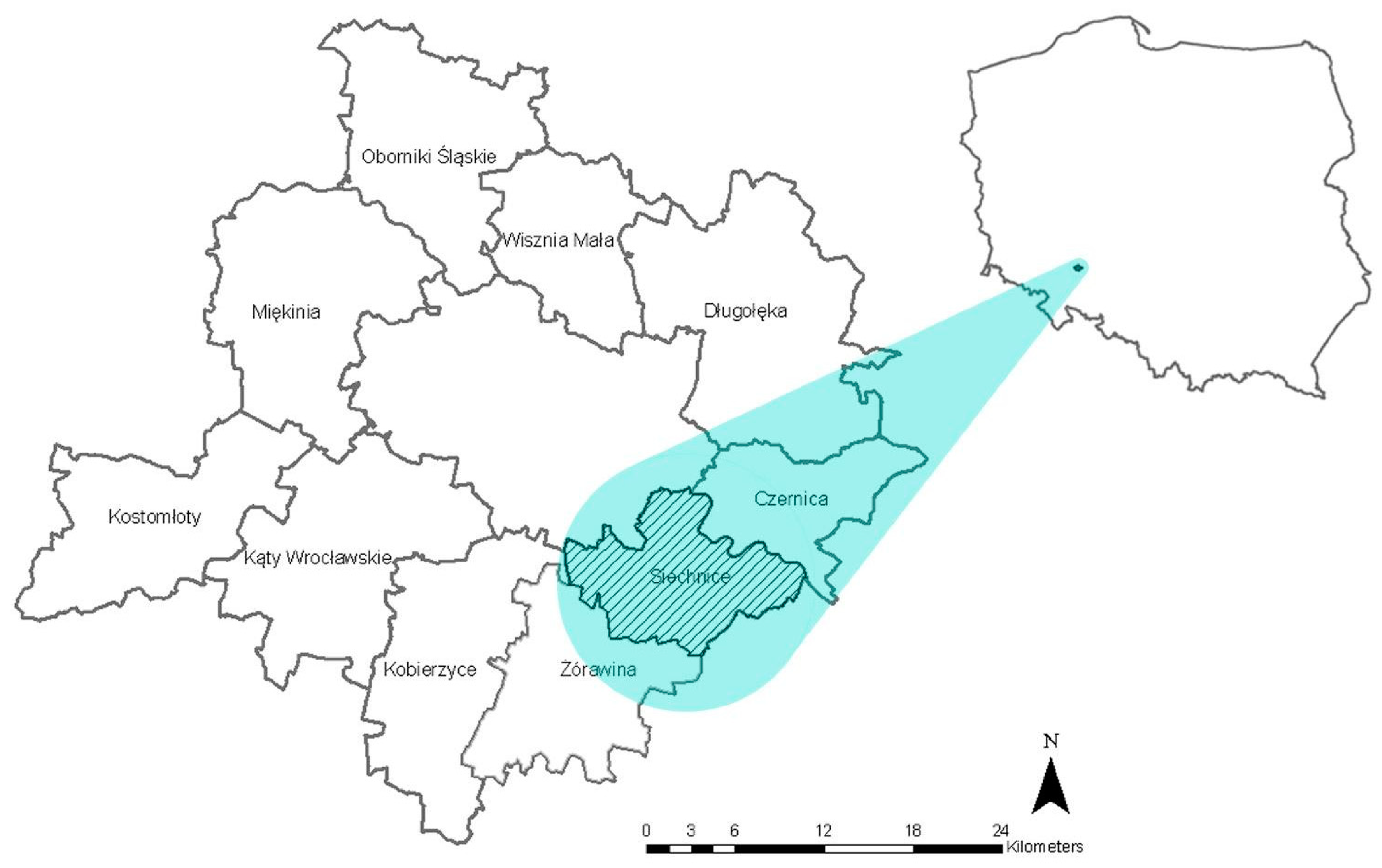
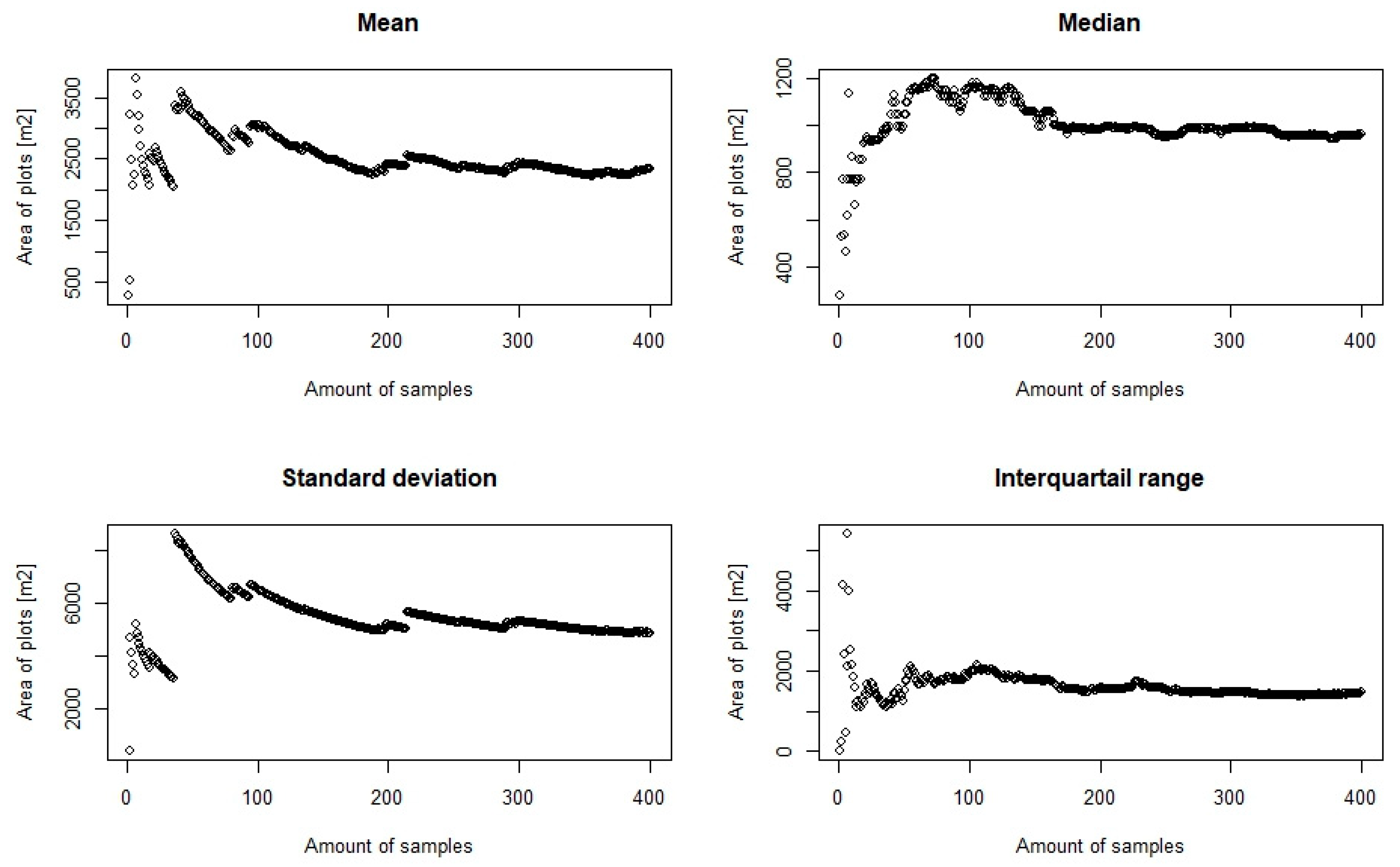
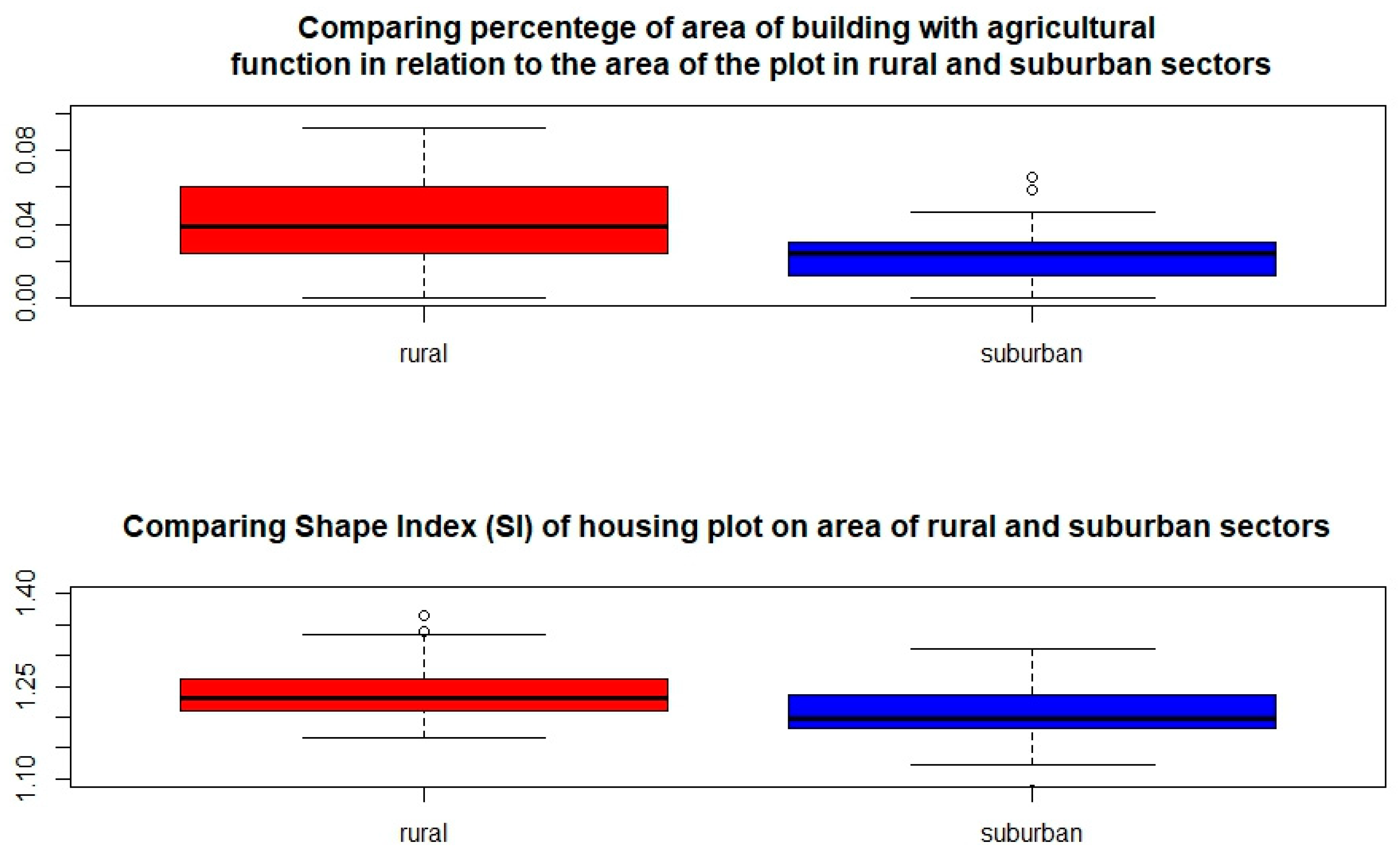
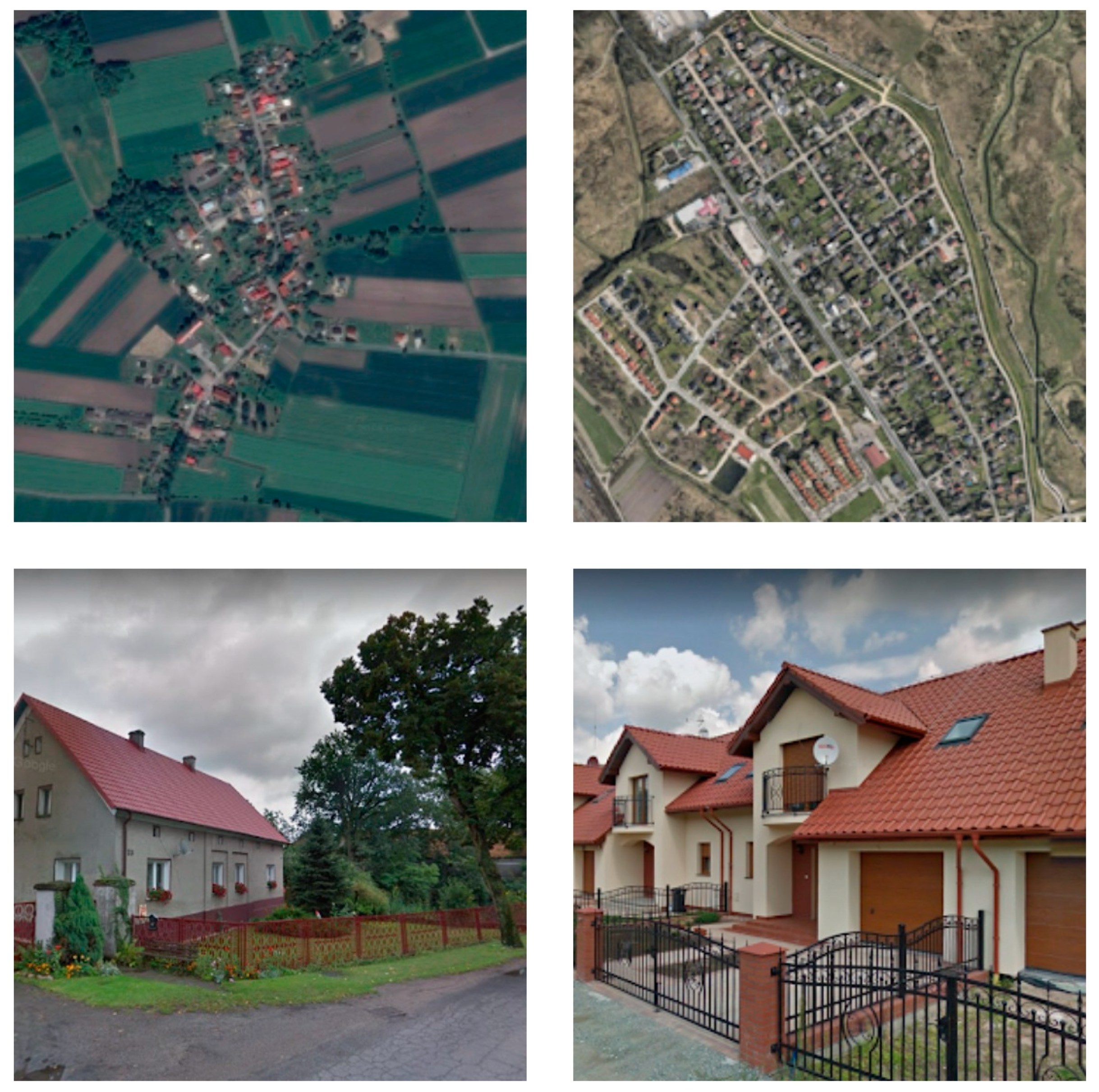
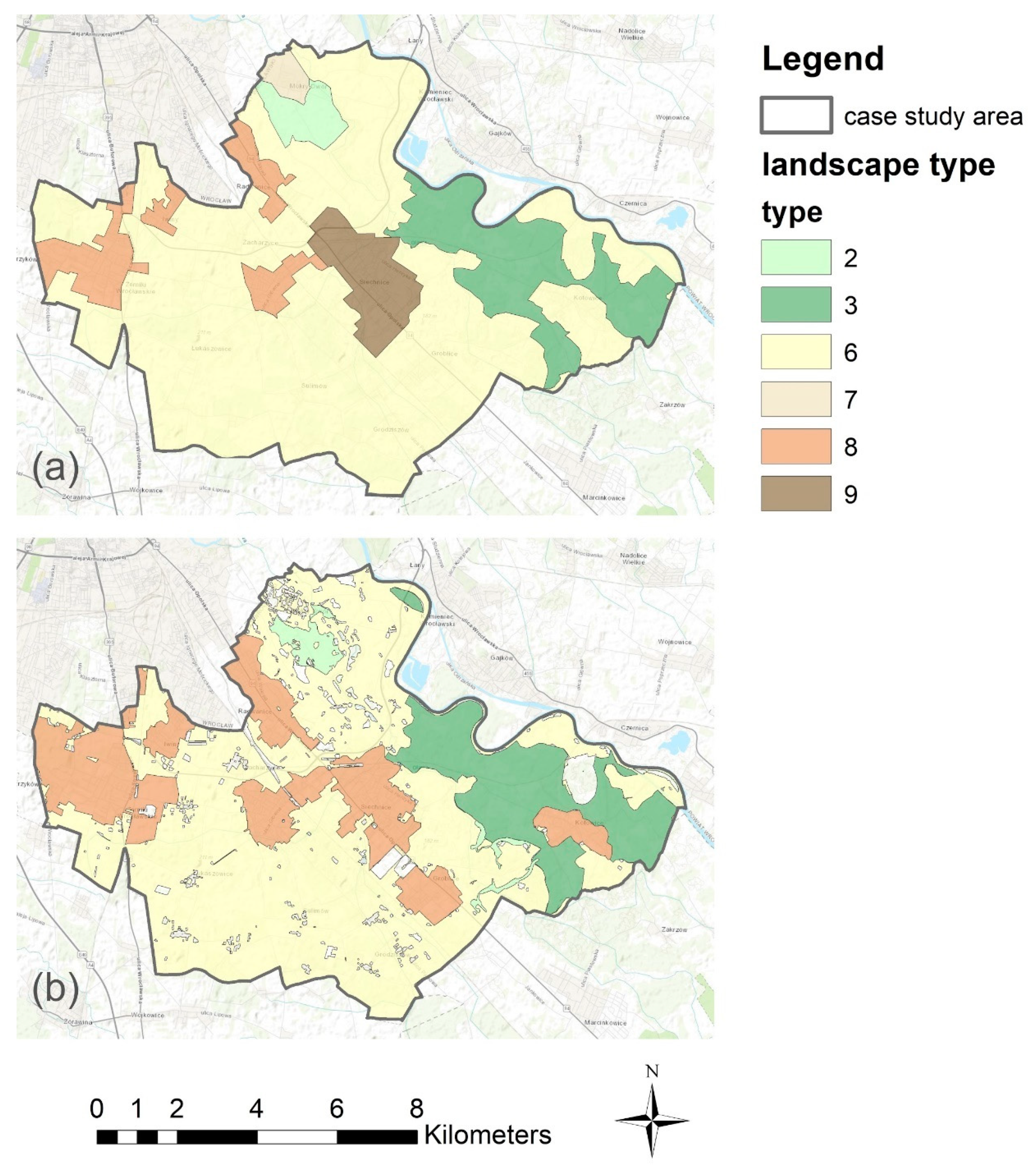
| Group | Type |
|---|---|
| A. Natural landscapes of cultural (usually extensive) use, functioning mainly as a result of natural processes, modified by human activity only in varying degrees | 1. Surface water |
| 2. Marshy-meadow-mostly treeless | |
| 3. Forest | |
| 4. Non-forest, masonry, sandy and rocky | |
| 5. Mountain over forest border | |
| B. Natural and cultural landscapes, formed as a result of the joint action of natural processes and the conscious modification of land cover and spatial structures by man | 6. Agricultural |
| 7. Mosaic | |
| 8. Suburban and residential | |
| C. Cultural landscapes, formed as a result of conscious modification of land cover and spatial structures by man | 9. Provincial |
| 10. Urban | |
| 11. Water-economic | |
| 12. Industrial | |
| 13. Mining | |
| 14. Communication | |
| 15. Ludic |
| Data | Scale | Source | Type | Costs and Availability | Graphical Representation |
|---|---|---|---|---|---|
| Topographic map | 1:25,000 | Geoportal | raster | free for research purposes |  |
| Database of topographic objects | 1:10,000 | Central Office of Geodesy and Cartography | vector | free for research purposes | 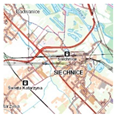 |
| Database of general geographic objects | 1:10,000 | vector | free download |  | |
| Ortofotomap (pixel size 0.5–1.0 m) | 1:5000 | raster | free for research purposes | 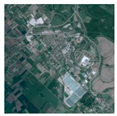 | |
| Administrative position | 1:5000 | vector | free download |  | |
| Numerical model of the terrain 1–25 m | 1:50,000 | Copernicus | vector | free download | 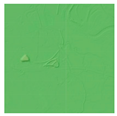 |
| Map of functional fields | 1:5000 | Agency for Restructuring and Modernization of Agriculture | vector | free for research purposes | 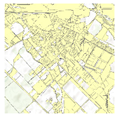 |
| Cadastral data | 1:5000 | vector | free download | 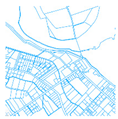 | |
| Forest map | 1:10,000 | Office of Forest Management and Geodesy | vector | free download | 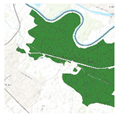 |
| Code | Type | Type of Data | Data Source |
|---|---|---|---|
| A2 | Marshy-meadow-mostly treeless | Code C (grassland) from Map of functional fields | Agency for Restructuring and Modernization of Agriculture |
| Code OIMK (marsh), OISZ (rashes) from Database of topographic objects | Central Office of Geodesy and Cartography | ||
| A3 | Forest | Forest map | Office for forest management and geodesy |
| B6 | Agricultural | Code PTTR (grassy vegetation and cultivation on agricultural land), PTWP (surface water), PTUT03 (orchard) from Database of topographic objects | Central Office of Geodesy and Cartography |
| B8 | Suburban and residential | Code BUBD01-06 (one family housing, two family housing, three or more family housing, buildings of collective residence, hotels, buildings with tourist functions, others), BUBD18 (rural housing), KUZA (monumental-historic complex) from Database of topographic objects | Central Office of Geodesy and Cartography |
| Cadastral data | |||
| C9 | Provincial | Code BUBD01-06 (one family housing, two family housing, three or more family housing, buildings of collective residence, hotels, buildings with tourist functions, others), BUBD07-17 (services), BUBD19 (religious function), BUBD20 (monuments) from Database of topographic objects | Central Office of Geodesy and Cartography |
| No of Area of Consideration | Number of Plots | Type According to Landscape Audit Identification Method | Type According to the Multivariable Analysis |
|---|---|---|---|
| 1 | 53 | rural | rural |
| 2 | 144 | rural | rural |
| 3 | 1285 | rural with residential feature | suburban and residential |
| 4 | 2299 | provincial | suburban and residential |
| 5 | 408 | rural | suburban and residential |
| 6 | 434 | suburban and residential | suburban and residential |
| 7 | 79 | rural | rural |
| 8 | 80 | rural | rural |
| 9 | 132 | rural | rural |
| 10 | 66 | rural | rural |
| 11 | 64 | rural | rural |
| 12 | 114 | rural | rural |
| 13 | 52 | rural | rural |
| 14 | 153 | rural | rural |
| 15 | 97 | rural | rural |
| 16 | 52 | suburban and residential | rural |
| 17 | 424 | suburban and residential | suburban and residentia |
| 18 | 1551 | suburban and residential | suburban and residentia |
| Code | Type | Method for Landscape Audit | Our Approach for Landscape Identification | ||||
|---|---|---|---|---|---|---|---|
| Area (ha) | Number of Units | % of Total Area | Area (ha) | Number of Units | % of Total Area | ||
| A2 | Marshy-meadow-mostly treeless | 232.05 | 1 | 2 | 256.71 | 3 | 3 |
| A3 | Forest | 1241.87 | 1 | 13 | 1285.00 | 2 | 13 |
| B6 | Agricultural | 7188.28 | 5 | 71 | 5895.53 | 3 | 60 |
| B7 | Mosaic | 101,55 | 1 | 1 | 0 | 0 | 0 |
| B8 | Suburban and residential | 802.78 | 5 | 8 | 1992.74 | 7 | 20 |
| C9 | Provincial | 512.08 | 1 | 5 | 0 | 0 | 0 |
| Not identified | 0 | 0 | 0 | 441.70 | 0 | 4 | |
| Sum | 9871.67 | 13 | 100 | 9871.67 | 15 | 100 | |
© 2019 by the authors. Licensee MDPI, Basel, Switzerland. This article is an open access article distributed under the terms and conditions of the Creative Commons Attribution (CC BY) license (http://creativecommons.org/licenses/by/4.0/).
Share and Cite
Solecka, I.; Bothmer, D.; Głogowski, A. Recognizing Landscapes for the Purpose of Sustainable Development—Experiences from Poland. Sustainability 2019, 11, 3429. https://doi.org/10.3390/su11123429
Solecka I, Bothmer D, Głogowski A. Recognizing Landscapes for the Purpose of Sustainable Development—Experiences from Poland. Sustainability. 2019; 11(12):3429. https://doi.org/10.3390/su11123429
Chicago/Turabian StyleSolecka, Iga, Dietmar Bothmer, and Arkadiusz Głogowski. 2019. "Recognizing Landscapes for the Purpose of Sustainable Development—Experiences from Poland" Sustainability 11, no. 12: 3429. https://doi.org/10.3390/su11123429
APA StyleSolecka, I., Bothmer, D., & Głogowski, A. (2019). Recognizing Landscapes for the Purpose of Sustainable Development—Experiences from Poland. Sustainability, 11(12), 3429. https://doi.org/10.3390/su11123429






